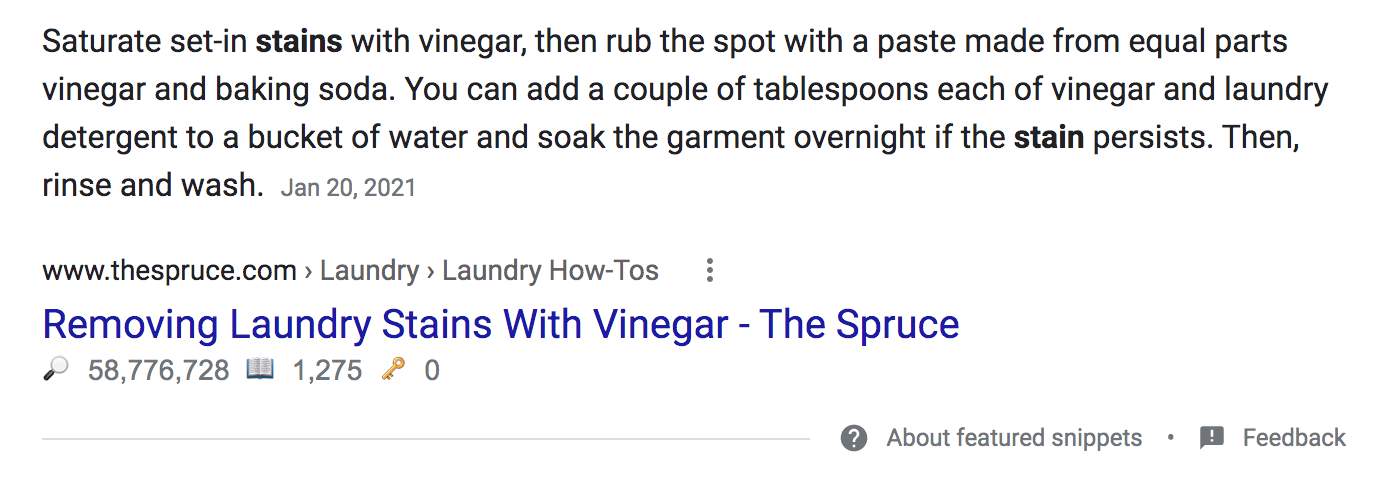Must Try SEO Tips: Your Blog With Thank You

If you’re not first, you’re last. This saying speaks to many people’s thoughts on search engine ranking. There are so many companies producing content regularly. But are your efforts going to waste? I’ve compiled a list of strategies that you should be doing with your blogs each time you post content to get the most SEO advantages out of your content.
Crosby Digital Marketing helps businesses establish a content marketing and SEO strategy. We would love to talk more with you about developing a plan to attract the right traffic to your website that results in more interested buyers.
Do keyword research.
Last month, I discussed the first steps in creating a blog to accomplish SEO goals on your website. This included doing keyword research and creating headers for your blog. But in case you missed it, here’s a rundown on keyword research.
There are so many tools out there for keyword research. But your best bet is to start with Google. It is where you want people to find you, after all.
Pick a keyword that you want to rank for, search for it, and then look at related searches at the end of the page. Form a list based on what you see.
Put your most important keywords in your headers.
Headers help Google find your content and site. Google scans your headings first, so put your best foot forward.
Think of your blog like an outline before you start writing. Your H1 header will be your main topic. Your H2 headers will be your subtopics, and your H3 might have a subheading below that.
Your blog should be about a primary keyword that you are targeting. This should be in your H1 or H2. This will allow people to see it easier and Google to find it faster.
Write for humans first.
This is where SEO experts might diverge on their opinions. It is part of my philosophy as an SEO professional to write for humans first.
Yes, writing for Google algorithms can help you rank higher.
But, your goal in bringing someone to your site is to make a conversion. You want emails, phone calls, and purchases. Write for a person in mind. Imagine a buyer’s persona of a typical customer and pretend this person is reading your content.
Your writing has to cater to the human on your site that will ultimately make a purchase. Compelling and quality writing will build trust with your audience.
Don’t keyword stuff.
Part of what makes something nice to read is how the piece flows. If you are trying to target too many keywords, your writing won’t flow.
As a reader, you have experienced keyword stuffing. It feels like there is a clunky list of words in every sentence. It’s no fun to read, and you probably left the website to find answers elsewhere.
Pick 1-2 keywords. From there, try to place these keywords in your writing naturally. Find different ways to phrase them.
After all, your writing should help you create a relationship with your future customer. People don’t want gimmicks. They want value. Write useful content.
Create unique and high-quality content.
This seems common sense, but many people are not doing this in the content marketing world. Google is the world’s best plagiarism checker, so create unique, high-quality content. You will rank higher in search engine searches.
Why does Google care if your content is unique? Google wants to be the first and only search engine you use. To do this, they have to provide the most relevant and valuable results consistently. So they rank websites higher if they are providing the most valuable and authoritative information.
This information should be high-quality. Take pride in your business and expertise. Write content that shows off your knowledge. This will produce quality content.
If you don’t know where to start or are just pressed for time, we can help.
An additional benefit of unique and high-quality content is that others will begin to link back to it. This is one of the best things for SEO, and it is best to do organically.
Write longer blogs that are easier to scan.
This goes along with the idea of writing for humans. People are coming to Google Search for answers, but they want those answers to be easy. So they scan websites very quickly.
Here are a few things to keep in mind to make blogs easier to read:
- Make sure the blog has white space. People might not even read if it looks too visually overwhelming.
- Keep paragraphs or blocks of text at 3 sentences each. Most web browsers are on smartphones, and this means text can appear much longer.
- Break up text with descriptive headers.
- Keep it organized and predictable.
- Use visuals and links.
Write at an 8th grade reading level. (No, really!)
People like an easy read. For most industries, an 8th grade level is just right-- not too easy, not too hard. It’s all our attention span can handle in the age of distractions.
A great free tool to test your writing is the
Hemmingway App. Paste your blog into this tool to see which parts need to be reworked.
At the same time, you need to build authority with your audience. So make sure your writing is free of grammar and spelling mistakes. Writing more simply does not mean you can have room for errors.
Aim for featured snippets.
When you search for information on Google like this:
The body content of your post goes here. To edit this text, click on it and delete this default text and start typing your own or paste your own from a different source.
Often you see featured snippets like this:
Featured snippets are great for your website. A reader’s eye goes straight to this information and will most likely choose to go to your website to read more. Content marketers should aim to develop content that is likely to be turned into featured snippets.
How do you create content for featured snippets?
A featured snippet should answer questions fully but also be succinct. The question should be included in the header, and the content should have the longtail keyword you are targeting. Write in the active voice with verbs in your answer. Google is looking for the easiest and best information.
Put keywords in meta descriptions and alt text.
This is the place where many bloggers neglect SEO best practices. Meta descriptions and alt text can usually be found on your blogging platform’s settings button for each post. Meta descriptions are shown under your blog’s title on a Google search. Alt text is what is associated with images on your blog. Both meta descriptions and alt text allow Google to learn more about your content to rank the pages higher on Google.
Link to other relevant content on your site.
A blog aims to get people to your site via Google search and keep them on your site longer. So make sure all of your content is weaved seamlessly into your site via links. Linked content allows people to get more engrossed with what you have to say.
On the Google side of things, search engines can understand how your site is laid out. Internal links help search engines create site maps that can show up in Google searches.
But one word of warning, don’t make your links too spammy. Readers will be turned off, and the goal is to get humans to read and convert. So keep links natural, and don’t overdo it.
Link to quality websites.
If people are linking to your content, Google will rank you higher. Start networking your content by linking to quality websites.
There’s many viewpoints here, but often people in SEO try to make quick gains with SEO. One of the strategies is link buying. A person pays to have a link to their site on another site.
This can work, but here’s where it can go wrong. If a site is selling links, then there is a little filter on quality. The site’s domain authority can decrease, and you can lose those quick gains you made in SEO.
It’s hard work to research information for blogs, but it will help your domain authority to link to high-quality domains and data. And who knows, maybe you will get a link back in return.
It can be hard to produce relevant, engaging, and informative blogs. Let us know if we can help you create a strategy or support bringing your plan to life. Crosby Digital Marketing specializes in small business content marketing and writing services.




